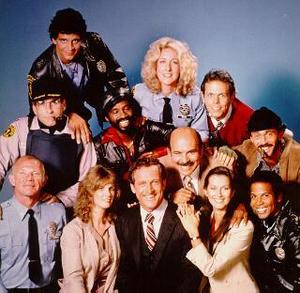The problem to be investigated is the ethical use of information technology in a modern society. Historically information technology had limited applications and impacts on society in general. Today, however, this has changed as information technology is a part of nearly every business and personal activity (Brooks, 2010). As a result, there are more opportunities than ever for millions of individuals to engage with information technology in an unethical manner. This is why it is essential for education systems and businesses to address the ethical concerns of information technology usage and to develop a practical code of ethics to prevent, or at least mitigate, ethical dilemmas and infractions.
Societal Ethical Changes
Society ethical changes caused by information technology are extensive. In prior generations information technology was reserved for very specific industries and there was an elitist segregation related to who worked with information technology and what pieces of information were impacted by information technology (Brooks, 2010). This all changed in the 1990s when information technology emerged as a rapidly evolving industry. Within a matter of years the world transitioned from a manual world to a digitally controlled world. Today, nearly every person on the planet interacts with some form of information technology on a daily basis, and in the western world this interaction is practically non-stop from the time the individual wakes up in the morning until they go to sleep at night (Nuyen, 2004). As a result of this constant interaction with information technology, people today have greater access to information that can be used in unethical manners.
The extent to which employees and the general public have access to sensitive information and to non-sensitive information has led to a number of society ethical changes. These changes include accessing private information for personal gain, reverse engineering programs to gain trade secrets and using information technology to harass or victimize other individuals (Brooks, 2010; Nuyen, 2004). These new ethical concerns have led to the development of a number of laws and security measures that are intended to protect people from the vulnerabilities caused by the mass usage of information technology; however, these protective actions have not solved the problem (Jourdan, Rainer, Marshall & Ford, 2010). As a result, information technology continues to be used to embezzle money from their companies, to steal other people’s identities and to bully individuals on social networks.
Ethical Usage of Information Technology
The ethical usage of information technology needs to be evaluated on two levels. The first level is the private level, or the personal level. Here the ethical usage of information technology relates to how individuals utilize information technology (Brooks, 2010). Ethical usage of information technology on the personal level include communicating with friends, family and colleagues, conducting legitimate business online, making purchases online and publishing information online; as well as accessing personal banking information to make withdrawals or deposits at an ATM, connecting with an automated information system to request information about an account or a business activity and utilizing information technology to collect or send data for legitimate purposes.
Unethical behavior, on the personal level, occurs when the individual uses the information technology in a fraudulent or malicious manner (Brooks, 2010). Common examples of the fraudulent usage of information technology include hacking into another person’s computer to steal their personal information, hacking into a company’s computer network in order to corrupt it or to steal data, using information technology to establish a new identity based upon information that has been stolen or fraudulently collected and using electronic access to customer data at work in order to steal information that can be used for personal gain (Brooks, 2010). Malicious activities that people engage in online include cyber-bullying, the spread of viruses and malware and the use of online scams to victimize individuals (King, 2010). While all of these behaviors can be viewed as unethical, the solutions to these problem behaviors also present ethical dilemmas. The biggest problem is balancing the constitutionally guaranteed rights, such as freedom of speech, with protective measures that limit the use of information technology to harass or to victimize individuals (King, 2010). Other ethical problems that can develop as solutions evolve include personal liability issues and the assignment of who is responsible for paying for the development of information technology security measures.
The second level of ethical concern related to information technology usage is commercial usage of information technology. Here the biggest ethical dilemmas relate to how companies utilize their information technology and how this usage impacts their customers (Brooks, 2010). For example, a recent ethical controversy related to commercial information technology usage focused on the mining of online browsing behaviors of customers. Here the controversy was that companies were monitoring the online behaviors of their visitors, e.g. what keywords they were using, what they were clicking on and what transactions they were engaging in. These behaviors were then entered into a database and sold to marketing firms and other companies without the permission of the online visitors. This is just one example of unethical behavior engaged in by commercial organizations. Other concerns related to the unauthorized collection of personal information about customers and selling this information to third parties (Butler, 2007). While personal ethical infractions are serious, commercial ethical infractions are usually dealt with through the creation of legislation that restricts unethical behaviors that the public strongly objects to.
The Development of a Code of Ethics for IT Usage
The development of a code of ethics for information technology usage has been subjected to a number of controversies. The first controversy is that the development of a corporate code of ethics related to information technology usage can be a negative sign that the organization is trying to “engender society change” into the organization’s structure (Schwartz, 2000); as opposed to remaining autonomous to social pressures. Here the ethical concern is that the organization is being forced into a socialistic trap that will hinder the sustainability of the organization.
Another problem that emerges from the desire to develop a code of ethics for information technology usage is that information technology is a unique field that has characteristics that make it separate from other types of business industries and components. (Nuyen, 2004; Schwartz, 2000). This means that ethics that are applicable to normal business practices may not be applicable to information technology. For example, since information technology involves the expression of ideas and speech, it may be protected by constitutional rights that make setting ethical limitations illegal and unethical. In order to get around this problem it is essential to take two steps. The first step is to figure out what laws are in existence, or that can be created, that can be applied to the situations to prevent what the organization deems to be unethical professional behavior, e.g. anti-phishing laws and anti-cyberbullying laws (Bulter, 2007; King, 2010). The second step is to develop a professional code of ethics that targets how employees are allowed to use information technology that is provided by the organization. This step ensures that the restrictions are legal and constitutional as they are bound by the rights of the business owner to protect their business interests and assets (Miller & Jentz, 2009). These simple steps can help organization leaders to develop effective ethical controls that promote free speech during personal time, while protecting the safety and security of organizational information technology and data during work hours.
Discussion
The development of a code of ethics for the usage of information technology needs to be all about reducing opportunities to engage in unethical behaviors. Right now people have an unprecedented access to information. This excess of access has produced an extreme vulnerability to unethical usage of information technology. In order to reduce this vulnerability companies need to use their legal rights to control employee behavior by developing a code of ethics that delineate exactly how employees can use company information technology. This will help to reduce legitimate opportunities for employees to act unethical while using company information technology. While this solves half the problem, the other half of the problem rests in the unauthorized usage of company information technology to engage in unethical behaviors. To control these unethical behaviors laws and company disciplinary actions need to be involved. Companies that notice unethical behavior by their employees need to take immediate corrective actions in order to protect their company assets and customers, as well as to set the standard of no-tolerance for such behaviors.
Conclusion
Ethical behavior is not difficult to define for the usage of information technology; however, it is difficult to implement standards of ethical behaviors in regards to information technology usage. This is because of the unique and often legally protected characteristics of the usage of information technology. In order to protect company assets and the rights of the public, it is essential to develop a set of standards that include both ethical codes and legal codes that control the legitimate opportunities that employees have to engage in unethical behaviors while using company information technology.
References
Brooks, R. (2010, Oct.) The development of a code of ethics: An online classroom approach to making connections between ethical foundations and the challenges presented by information technology. American Journal of Business Education, 3(10), 1+. Retrieved March 5, 2011, from http://www.proquest.com
Butler, R. (2007). A framework of anti-phishing measures aimed at protecting the online consumer’s identity. The Electronic Library, 25(5), 517-533. Retrieved March 5, 2011, from http://www.proquest.com
Jourdan, Z., Rainer, R.K., Marshall, T.E. & Ford, F.N. (2010). An investigation of organizational information security risk analysis. Journal of Service Science, 3(2), 33-42. Retrieved March 5, 2011, from http://www.proquest.com
King, A.V. (2010, Apr.) Constitutionality of cyberbullying laws: Keeping the online playground safe for both teens and free speech. Vanderbilt Law Review, 63(3), 845-884. Retrieved March 5, 2010, from http://www.proquest.com
Miller, R.L. & Jentz, G.A. (2009). Fundamentals of business law: Excerpted cases, 2nd ed. Mason, OH: South-Western Cengage Learning.
Nuyen, A.T. (2004). Lyotard’s post-modern ethics and information technology. Ethics of Information Technology, 6(3), 185-191. Retrieved March 5, 2011, from http://www.proquest.com
Schwartz, M. (2000, Jan.) Why ethical codes constitute an unconscionable regression. Journal of Business Ethics, 23(2), 173-184. Retrieved March 5, 2011, from http://www.proquest.com



